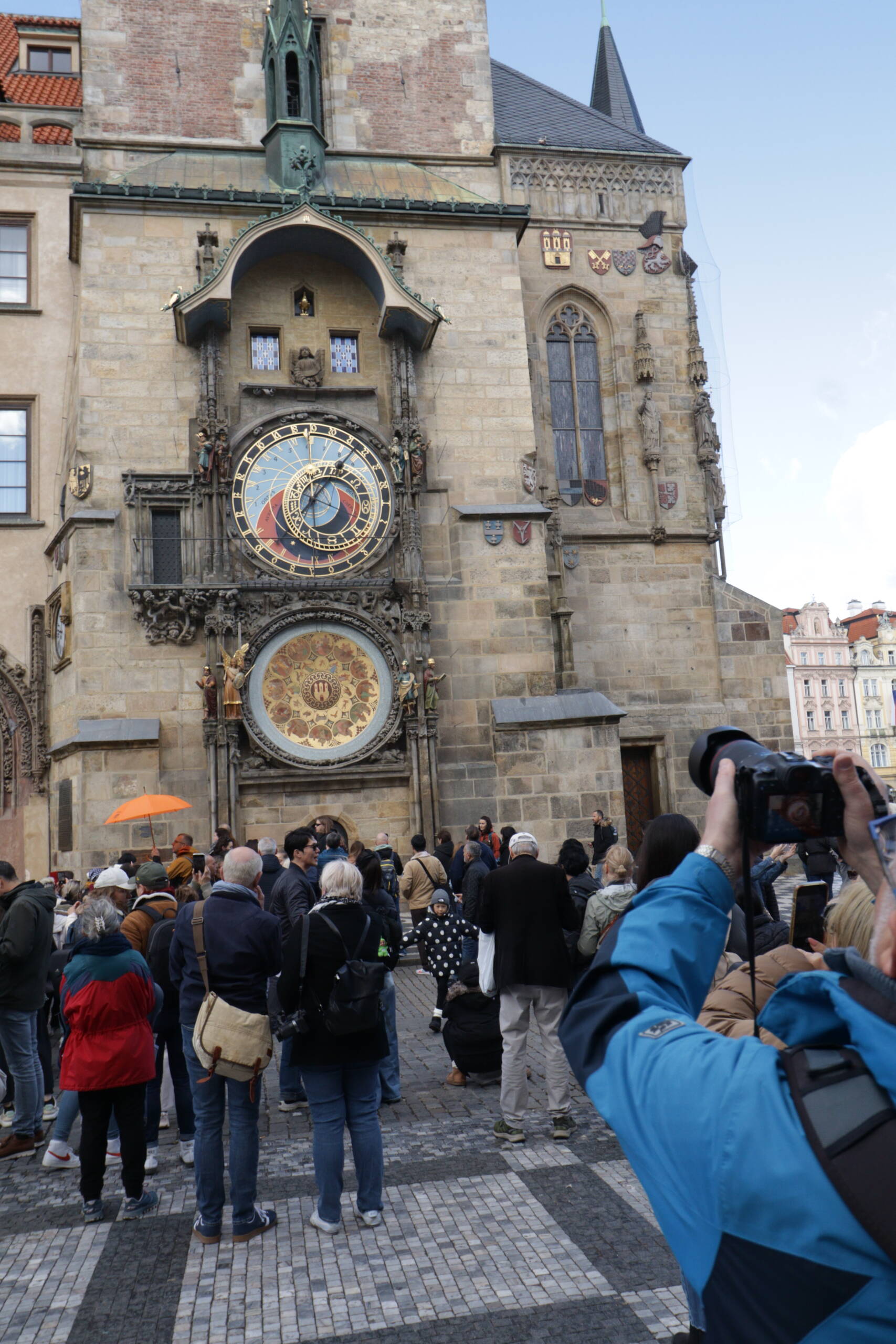There’s a moment that happens here almost without trying. You turn a corner in the Old Town, the street narrows just a little, and suddenly the whole world opens up into a square full of light, stone, and centuries humming quietly just under the surface. In the image, you can almost feel that shift: the crowd gathers like a slow tide in front of the Astronomical Clock, one of those medieval marvels that feels half mechanical, half myth. The tower wall shows its age in layers, bricks that seem to remember sieges and celebrations in equal measure. The clock face glows with that mix of gold, cobalt, and black, the kind of color palette that looks expensive just by existing. Above it, the tiny windows where the wooden apostles will appear are closed for the moment, the crowd waiting, cameras raised, phones in hand, a few people pretending to be casual about it. A person in a bright red jacket breaks the muted tones like a punctuation mark, while someone with a large mirrorless camera leans in, ready to claim the moment as their own. It’s a very Prague kind of scene: tourists, history, slightly cold weather, cobblestones, and a shared anticipation of something tiny and symbolic that everyone will forget five minutes later but still will talk about as if it was magic.

What makes Prague so naturally photogenic is that it doesn’t seem to be trying. The city isn’t polished the way certain tourist magnets are; it doesn’t shine itself up for visitors, doesn’t pose. The architecture is worn in the right places, a bit too heavy in others, like it has lived a long life and doesn’t mind showing the wrinkles. Even the sky cooperates in a vaguely dramatic way most days, hovering between blue and silver, giving every photograph that moody European personality people try so hard to copy with Lightroom presets. Here, the city simply exists, and the camera feels almost like a respectful observer rather than a tool forcing a moment.
The funny thing is, you can take a thousand photos in Prague and none of them will feel like you’ve captured it. The city’s beauty is slippery: it’s not only in how it looks, but in how it moves around you. The sound of church bells, the faint smell of roasted trdelník mixing with cold air, the street musicians playing melodies that always sound slightly melancholic, the casual elegance of someone walking their dog past a Gothic cathedral like it’s just another Wednesday. The image with the crowd at the clock isn’t just about the clock; it’s about the ritual of watching something together, even when nobody quite knows why they’re there. That’s the magic. Prague doesn’t offer beauty to impress you. It just lets you witness it, like you’re walking through a living, breathing painting that doesn’t need perfect composition because the composition is already built into the stones.
Maybe that’s why people keep coming back. Not for the photos they took, but for the ones they almost took and still remember.
Leave a Reply